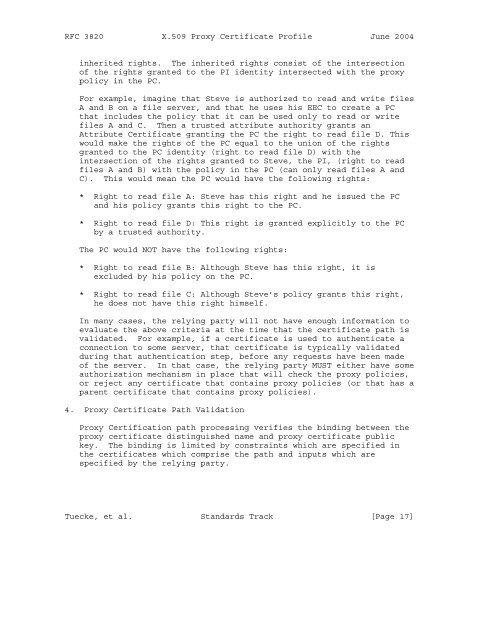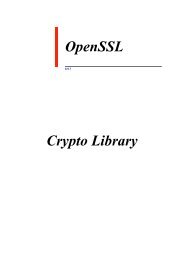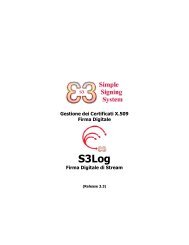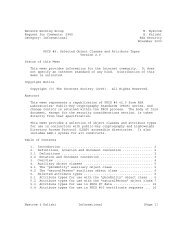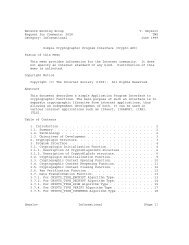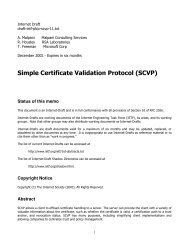Internet X.509 Public Key Infrastructure (PKI) Proxy ... - Clizio.com
Internet X.509 Public Key Infrastructure (PKI) Proxy ... - Clizio.com
Internet X.509 Public Key Infrastructure (PKI) Proxy ... - Clizio.com
Create successful ePaper yourself
Turn your PDF publications into a flip-book with our unique Google optimized e-Paper software.
RFC 3820 <strong>X.509</strong> <strong>Proxy</strong> Certificate Profile June 2004inherited rights. The inherited rights consist of the intersectionof the rights granted to the PI identity intersected with the proxypolicy in the PC.For example, imagine that Steve is authorized to read and write filesA and B on a file server, and that he uses his EEC to create a PCthat includes the policy that it can be used only to read or writefiles A and C. Then a trusted attribute authority grants anAttribute Certificate granting the PC the right to read file D. Thiswould make the rights of the PC equal to the union of the rightsgranted to the PC identity (right to read file D) with theintersection of the rights granted to Steve, the PI, (right to readfiles A and B) with the policy in the PC (can only read files A andC). This would mean the PC would have the following rights:* Right to read file A: Steve has this right and he issued the PCand his policy grants this right to the PC.* Right to read file D: This right is granted explicitly to the PCby a trusted authority.The PC would NOT have the following rights:* Right to read file B: Although Steve has this right, it isexcluded by his policy on the PC.* Right to read file C: Although Steve’s policy grants this right,he does not have this right himself.In many cases, the relying party will not have enough information toevaluate the above criteria at the time that the certificate path isvalidated. For example, if a certificate is used to authenticate aconnection to some server, that certificate is typically validatedduring that authentication step, before any requests have been madeof the server. In that case, the relying party MUST either have someauthorization mechanism in place that will check the proxy policies,or reject any certificate that contains proxy policies (or that has aparent certificate that contains proxy policies).4. <strong>Proxy</strong> Certificate Path Validation<strong>Proxy</strong> Certification path processing verifies the binding between theproxy certificate distinguished name and proxy certificate publickey. The binding is limited by constraints which are specified inthe certificates which <strong>com</strong>prise the path and inputs which arespecified by the relying party.Tuecke, et al. Standards Track [Page 17]


